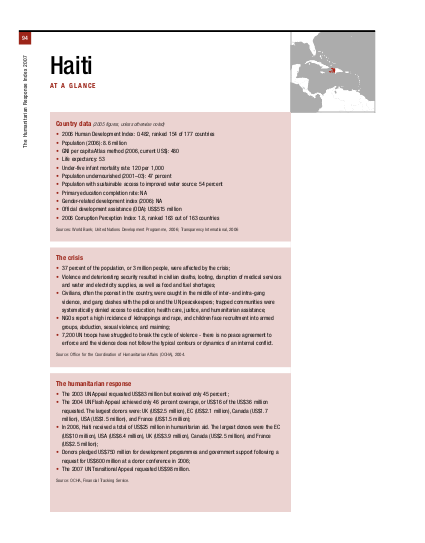
The 2006 crisis in Haiti was not a typical internal conflict, characterised by high intensity, and clearly delineated groups or opposing parties with established territorial control and political agendas, or following obvious cleavages within society. Instead, “the situation in Haiti is not a post-conflict situation but rather a protracted and violent 20-year long transition following the end of the predatory dictatorship of the Duvaliers."
In essence, the humanitarian crisis stems from the political violence and instability that accompanied struggles over state power, coupled with structural vul- nerabilities, including widespread poverty, the failure of the state to provide basic public goods, and exposure to natural hazards.This combination pushed segments of the population into circumstances of humanitarian crisis. Following years of neglect by the international community, the deployment in 2004 of the United Nations Mission for the Stabilization of Haiti force (MINUSTAH) marked a turning point for Haiti. Nevertheless, the humanitarian response in 2006 was still under- funded, poorly directed, and not sufficiently linked to addressing the country’s long-term problems, leaving a large segment of the population vulnerable to humanitarian disaster.